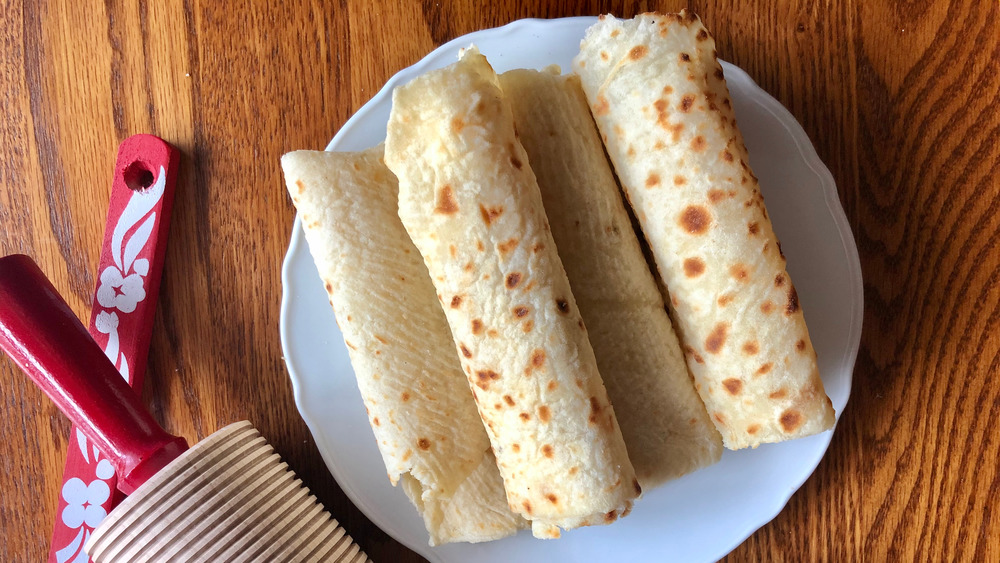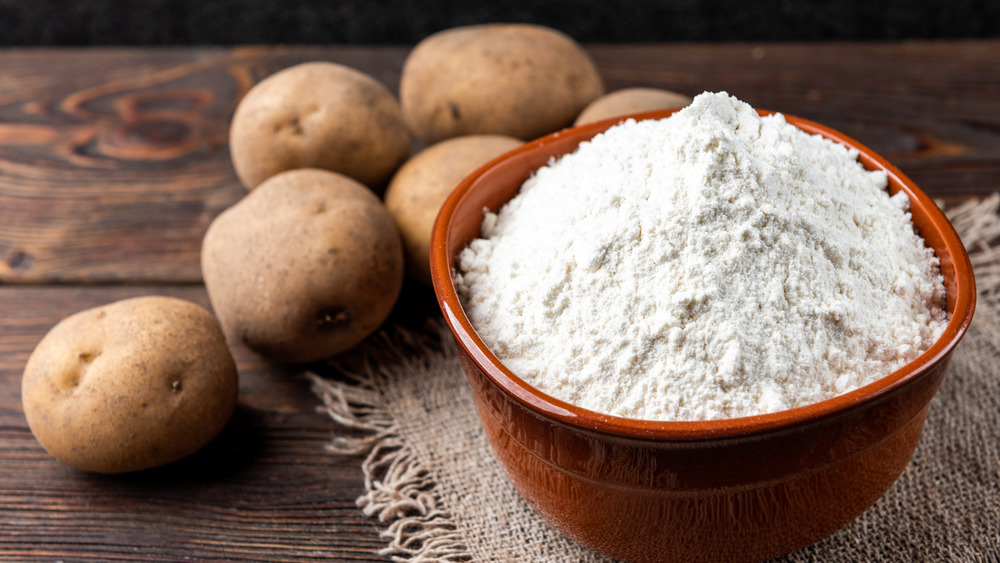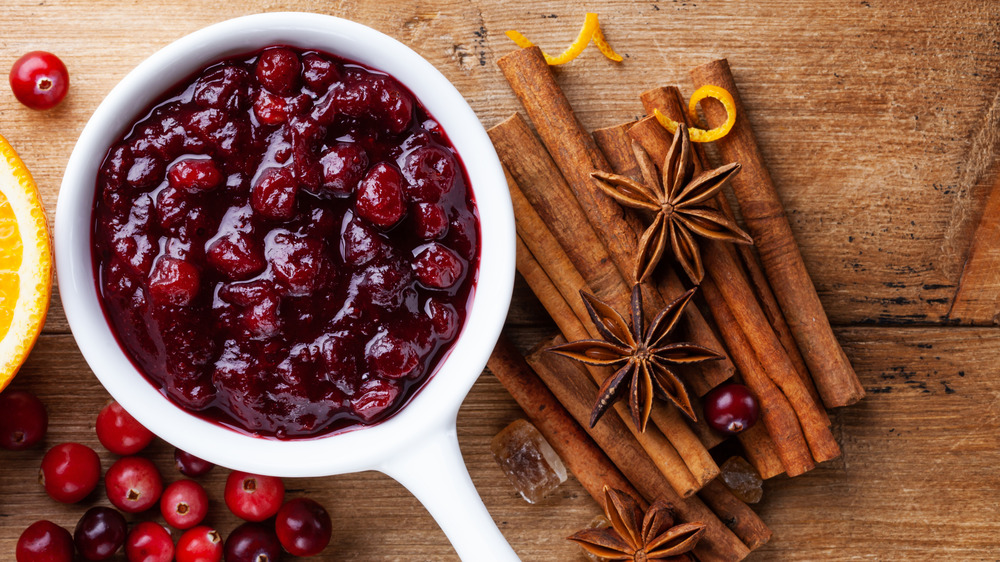The Scandinavian Holiday Treat You Need To Try
For many people, the holiday season means Christmas cookies, pigs in a blanket, and eggnog. But for some, it means lefse. Never heard of it? You're missing out because, according to Allison Robicelli of The Takeout, lefse is a starch-filled, carb-lover's dream of a flatbread made from potatoes, flour, butter, and cream. In other words, it's completely delicious. And, like all good things in life, it often comes with a dipping sauce on the side — like a sweet, tart lingonberry jam (yes, the same tastiness that's served alongside IKEA meatballs).
Lefse hails from Norway and it has roots dating back to the early 19th century, when Norwegians began planting and harvesting potatoes to combat famine (per Norwegian American). The dish remains a Christmas tradition for many Norwegian-Americans today, using recipes that have been passed down through generations. NPR says there's a fair amount of technique involved, and even a special "lefse stick" used for transferring the flatbreads to a griddle if you really want to be authentic about it. But Robicelli shared her tips and tricks for making this Scandinavian treat at home and it's totally doable, even for a lefse newbie. Here's how to do it.
Making lefse dough is simple
To give your holidays a Scandinavian twist with homemade lefse this year, start by planning ahead. According to Robicelli, the dough for lefse needs to chill overnight, so keep that in mind and do your best to keep your potato-flatbread cravings in check in the meantime. To start, slice three pounds of peeled russet potatoes into ¼" discs and plunge them into a pot of cold water. Swish them around, then drain and refill the pot with enough salted water to cover the potatoes and cook until the potatoes easily break apart when pierced with a fork.
Drain the potatoes, then blend them up with a stick of butter in the bowl of a stand mixer. Add ⅔ of a cup of heavy cream, one tablespoon of sugar, one teaspoon of salt, and two cups of flour, and continue mixing for two minutes. Cover and refrigerate the dough overnight; then, you're ready to knead.
On a well-floured surface, use your hands to knead the dough, adding as much flour as necessary to keep it from sticking. If you're part of the 17 percent of people who've eaten way more bread than usual during the pandemic, and you baked any of it from scratch, it's likely you can knead like a pro in your sleep. But, if not, Bon Appétit instructs to simply push the dough away from you with the heel of your hand, fold it over on itself, then pull it back, and repeat.
Cook the lefse and make the jam
Once the lefse dough stops absorbing flour and stops sticking to your surface, you can stop kneading. Next, pinch off golf-ball sized bits of dough and roll them into smooth balls, then flour your surface again and roll the dough balls into discs, placing a sheet of parchment paper between the dough and your rolling pin to keep it from sticking. Cook each rolled-out round of dough in a skillet with butter or oil, until each side is covered with brown spots.
You're almost done, but don't forget about that dipping sauce! You could use plain ol' jarred lingonberry jam, but it's the holidays — go fancy or go home! Robicelli gussies up her plain preserves by combining a 10-ounce jar of lingonberry jam with a cup of fresh cranberries, ¾ of a cup of red wine, a cinnamon stick, half of a star anise pod, ¼ teaspoon of ground cloves, and ½ teaspoon each of freshly grated ginger and nutmeg that has been simmered for 10 minutes. Allow the jam mixture to cool, then serve it alongside your homemade lefse and enjoy what is sure to be your new favorite holiday tradition.


